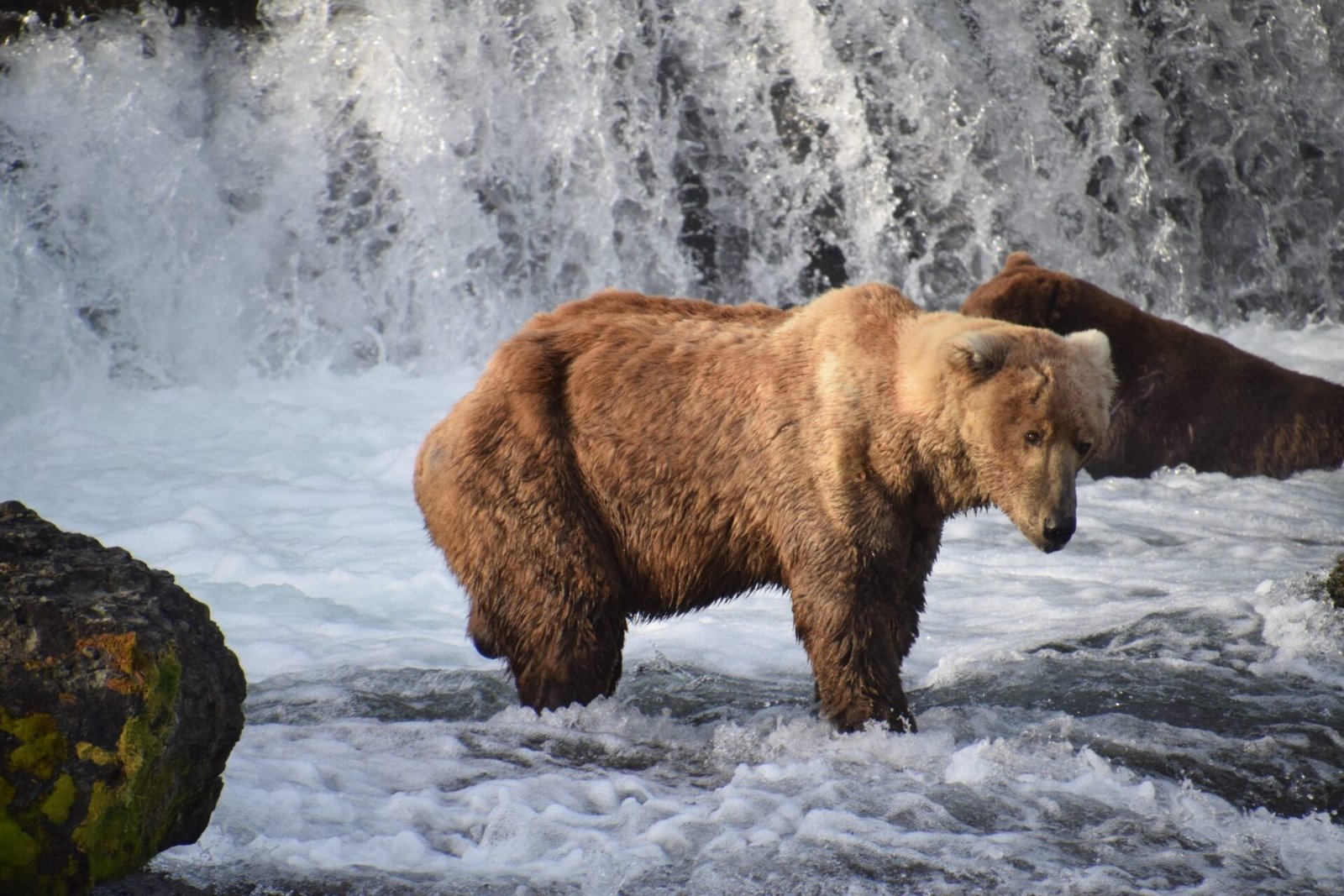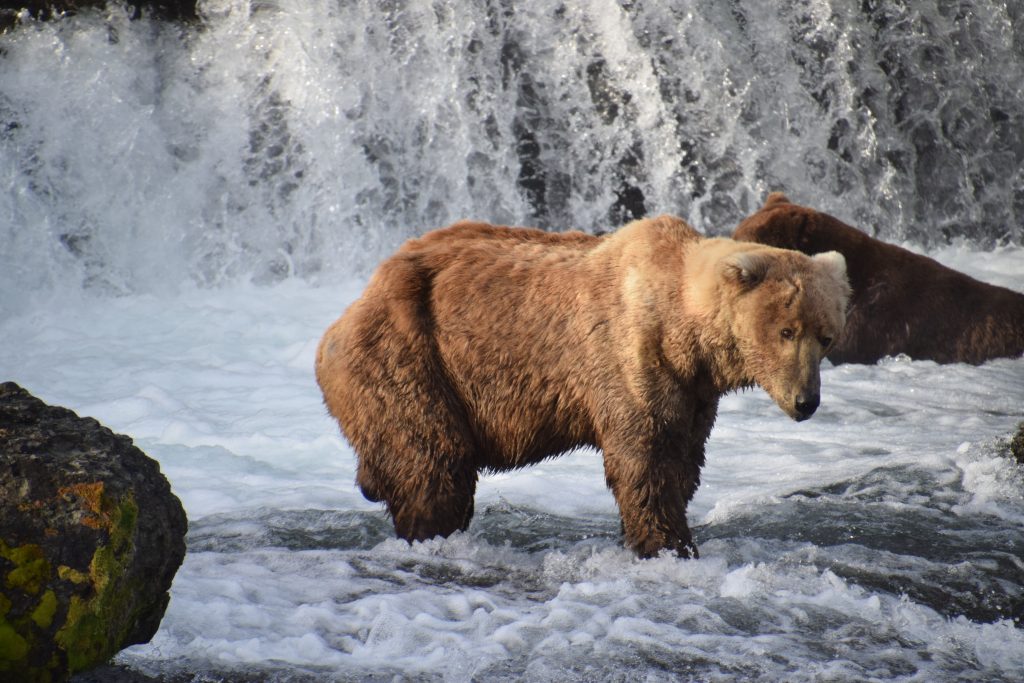By Mike Fitz
If you watch any of the wildlife or animal-themed cams on explore.org, then you know that they provide an exceptional lens through which we can view the lives of individual animals. The gorilla Pinga’s leadership and maternal devotion allowed her blended family group at GRACE to heal from trauma. The California condor Inikio survived wildfire only to be prematurely evicted from her nest by another condor. The legendary brown bear Otis is a quintessential example of longevity and adaptability in bears.
During my bear cam live chats, I focus a lot on the lives of individual bears and then relate those bear’s experiences to bigger ideas. Understanding how Otis has adapted to a lower rank in the bear hierarchy, for example, allows us to better understand how old bears adapt to change and challenge.
However, there’s relatively little in the scientific literature exploring how personal connections to individual animals affect a person’s support for conservation. In fact it’s been argued that this is a myopic strategy, and most conservation efforts focus on the species level. The individual animals that we watch on explore.org each have a large and devoted following, so how might our connection to individual animals influence our support for conservation of a species? A new paper, of which I’m a coauthor, finds that individual and favorite animals can have a large, positive influence on our attitudes toward conservation efforts.
My research colleagues on this project developed an online survey of bear cam viewers that was available in summer 2019 and summer 2020. When survey participants were asked if they could identify individual bears 14% of viewers said yes, 56% responded sometimes, and 30% said no. Viewers who could identify individual bears were also asked how many individual bears they could identify. Twenty-one percent of those respondents indicated they could identify one bear, 45% could identify 2–4 bears, 20% could identify 5–7 bears, and 14% could identify more than 7 bears. When asked if they have a favorite bear 53% responded yes and 47% responded no.
So what do those results mean? Not much until we examined the answers to follow-up questions. In particular, viewers were asked to rate their agreement with the statement “the ability to learn about and/or identify individual bears influences my willingness to support conservation programs.” The question was on a scale of 1 (strongly disagree) to 7 (strongly agree). Those who could identify individual bears agreed with that statement at significantly higher levels (4.86 ± 1.86) than those respondents who could not identify individual bears (3.31 ± 1.80). Importantly, those who said they had a favorite bear reported even higher levels of support for bear conservation (5.01 ± 1.58). These results are consistent with another study based on the same survey that found the ability to identify individual bears positively influences a person’s willingness to pay to protect individual brown bears. Furthermore, intentionally watching the bearcams when a specific bear was on screen yielded better conservation outcomes according to the survey results (that is, if you said you watched the bear cams more when Otis or 503 or another favorite bear were on camera then you were more likely to state you supported bear conservation).
A separate series of questions in the survey aimed to evaluate a person’s emotional connection to brown bears through a statistical method called conservation caring. This is a numerical measure of a person’s positive emotional connection to species or place. These questions were on a scale of 1 (strongly disagree) to 9 (strongly agree). A higher score indicated a greater emotional connection. Viewers who could identify individual bears had significantly higher conservation caring levels (7.06 ± 1.68) than viewers who could only identify individual bears sometimes (6.81 ± 1.54) and viewers who could not identify individual bears (5.85 ± 1.70). Conservation caring levels also climbed with the number of bears a person said they could identify.
If you can’t identify bears on the bear cam, then don’t worry. It’s not a competition and I’ll continue to work to give everyone the tools and stories that allow us to connect with individual bears. I also know there are many people who still care for bears greatly but don’t place as much of an emphasis on getting to know individuals. What’s more important is that we recognize the individuality of wild animals and acknowledge that they are not automatons acting merely on instinct. They think and feel and their lives are important in the conservation of entire species. Other Otis-like bears doing Otis-like things roam over wild areas of North America, and if we can secure and maintain healthy habitat for Otis then other bears will benefit.
We hope to expand on these results and publish more about the influence of individual bears on conservation. I’m also interested in exploring how interpretive events—such as the live chats and Q&As that I lead during the bear cam season—provoke people to act to conserve bears and other wildlife. After all, it’s one thing to say you support wildlife conservation, but it’s another thing to take action.
Many viewers of explore.org know that watching wildlife through webcams can be a powerful and meaningful experience. With the statistical support of this and future studies, perhaps we can inspire more parks and protected areas to utilize webcams and interpret the lives of individual animals to build greater support for wildlife conservation.
I’d like to thank the researchers who made this study possible—Jeff Skibins (who drafted this paper and did the data analysis) and Lynne Lewis and Leslie Richardson (who were instrumental in the survey design and implementation). I’d also like to thank the Katmai Conservancy for covering the expense to make the paper available to everyone through open access.


